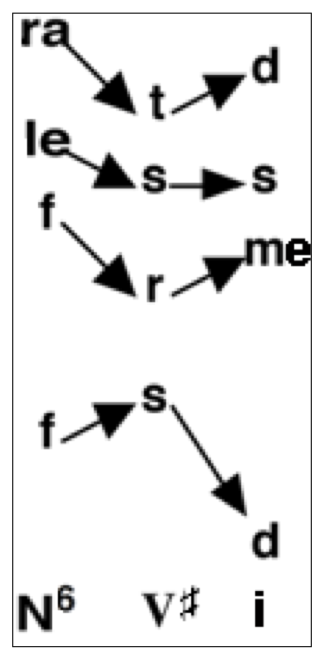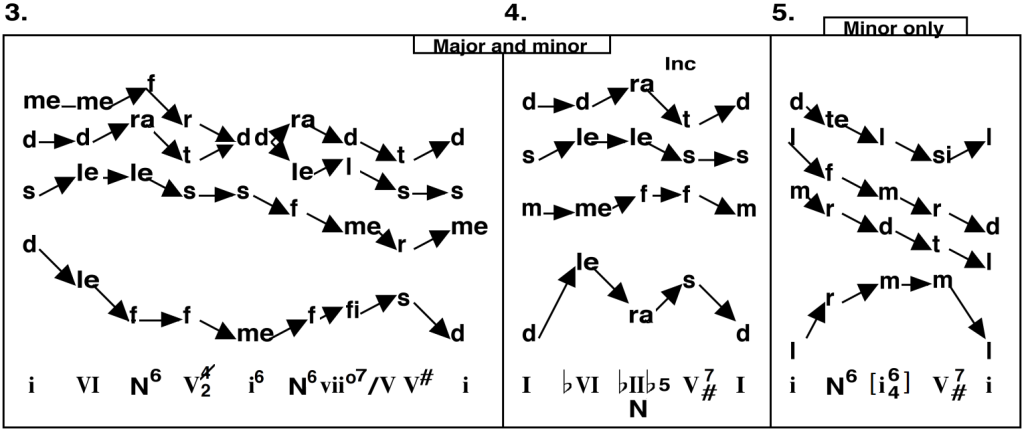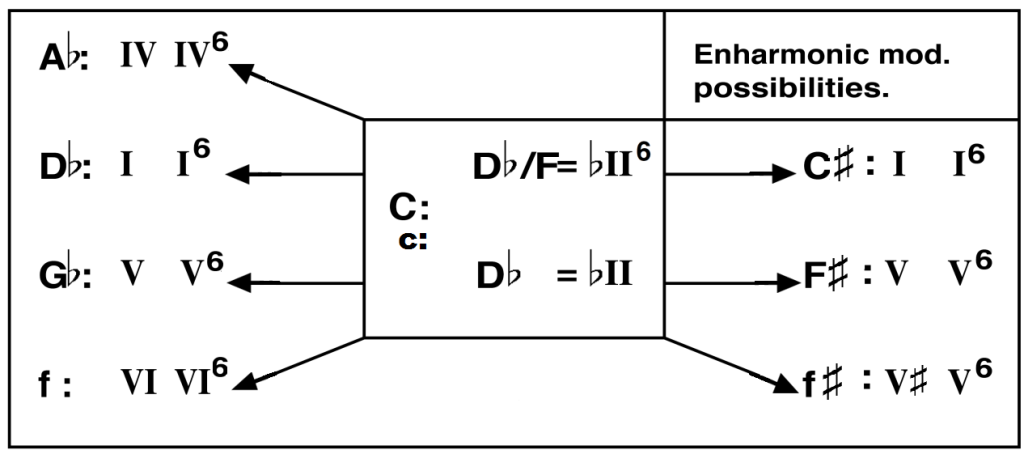25 Neapolitan Chord
The chord is available both in major and minor keys. It is a prolongation or substitute of the predominant area.The chord is most often found in first inversion and is called the Neapolitan sixth chord (N6). The name probably originated in Italy during the Baroque era.
The Neapolitan chord as a substitute for the supertonic chord in major (ii) and minor (iio):
The Neapolitan chord is more frequently used in minor keys. In minor keys, the iio triad becomes ![]() II
II![]() 5.
5.
In major keys, the Neapolitan chord contains ra (the lowered 2nd scale degree) and le (the modally borrowed 6th scale degree).
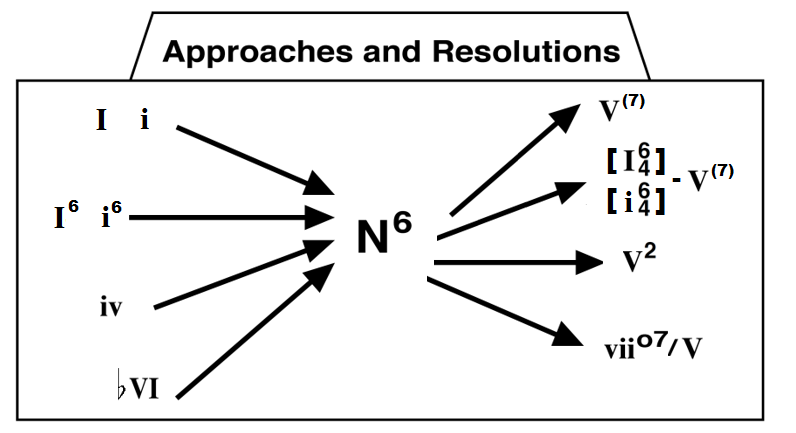
As with IV and ii(6), the bass (the 3rd of the chord) is doubled in the N6 chord. Between N6 and the dominant (N6 – V![]() ) or dominant group (N6 – [i
) or dominant group (N6 – [i![]() ] – V
] – V![]() ), the upper voices move in contrary motion against the bass. Due to the contrary motion, ra moves down to ti, creating a double leading tone effect moving to the tonic: ra – ti – do.
), the upper voices move in contrary motion against the bass. Due to the contrary motion, ra moves down to ti, creating a double leading tone effect moving to the tonic: ra – ti – do.
Voice Leading
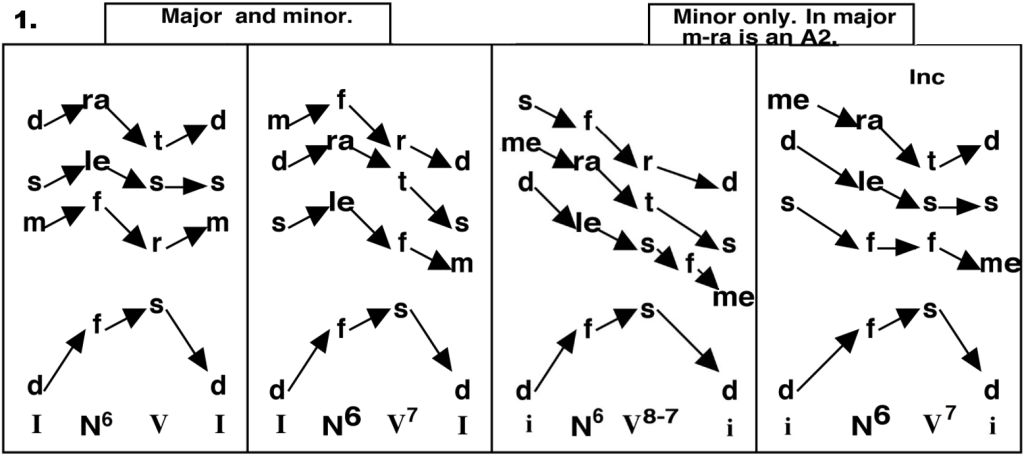
The N and N6 chords are often preceded by the i(6), iv, or VI chords in harmonic minor and the I(6), iv![]() , or
, or ![]() VI chords in major. In example #4, the movement of
VI chords in major. In example #4, the movement of ![]() VI to the root position N triad is a falling 5th connection, with the
VI to the root position N triad is a falling 5th connection, with the ![]() VI chord acting as the dominant of the Neapolitan chord.
VI chord acting as the dominant of the Neapolitan chord.
Example #5 is written in la-minor. The lowered 2nd scale degree is te.
In minor keys, the movement of VI to the root position N triad is a falling 5th connection (example #6).
In the diatonic sequence in minor (example #7), the Neapolitan triad replaces the iio triad. The example is written in la-minor, with the lowered 2nd scale degree being te.
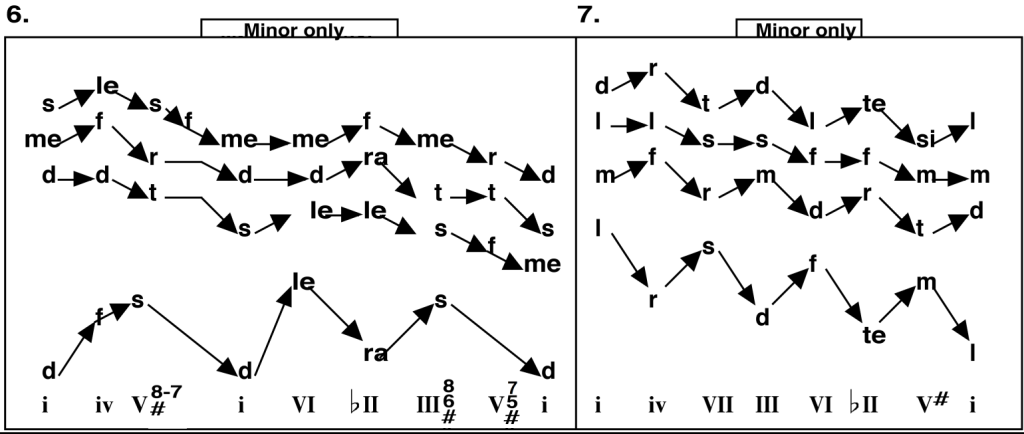
The Neapolitan Chord in Modulation
1. Using the Neapolitan chord to modulate
The chart below illustrates the use of the Neapolitan chord as a modulating device to distant keys from C major or C minor.
For example:
The Neapolitan chord may be employed at times enharmonically. For example, in the modulation from C major to F-sharp minor, D![]() /F is enharmonically reinterpreted as C
/F is enharmonically reinterpreted as C![]() /E
/E![]() .
.
2. Doubling when using N6 to modulate
It is not possible to double the N6 (![]() II6) chord properly in both the departure and arrival keys. Use common sense to decide which solution is more practical, but do not double the bass (3rd of the chord) if it is the leading tone in the new key. In the example below, the N6 is not doubled correctly in D major, but it is doubled correctly as V6 in A-flat major.
II6) chord properly in both the departure and arrival keys. Use common sense to decide which solution is more practical, but do not double the bass (3rd of the chord) if it is the leading tone in the new key. In the example below, the N6 is not doubled correctly in D major, but it is doubled correctly as V6 in A-flat major.
Practice 1
Transpose the voice leading progressions into several keys, using both keyboard and choral open/close voicing. Provide full analysis. Play at the keyboard.
Practice 2
Practice 3
Practice 4

